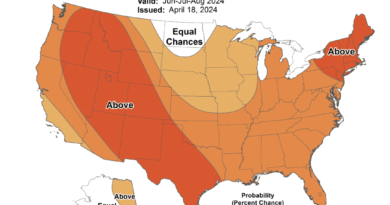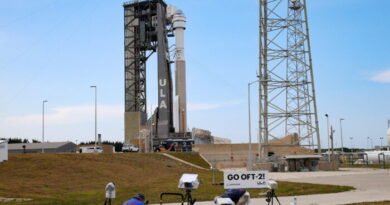Vermont Experiences Further Flooding While Recovering from Beryl Storm
Some parts of the Green Mountain State reported receiving seven to eight more inches of rain in an overnight period.
It’s been less than a month since the remnants of Hurricane Beryl brought torrential rain and fatal flooding to Vermont, and another round of disastrous weather has just passed through.
Severe, slow-moving storms dumped heavy rainfall overnight from July 29 through the morning of July 30, with certain areas of the state receiving up to seven to eight inches, according to the National Weather Service (NWS) station in Burlington as reported by The Epoch Times.
The most impacted area was the northeast corner of the state known as the “Northeast Kingdom,” which includes the towns of Lyndon and St. Johnsbury.
These areas experienced major flash flooding, as well as landslides.
During the night, the Vermont Emergency Management Agency conducted more than two dozen boat rescues.
While some residents managed to rescue themselves, others had to remain in place.
Vanessa Allen, a resident of St. Johnsbury, described having to remain indoors as the two roads near her home were washed away. She witnessed a neighboring house being lifted off its foundation, blocking a road.
As of 11 a.m. on July 31, most of Vermont was still under a flood watch, and the NWS was monitoring potential storms in the area. No new flood-related deaths had been reported.
NWS meteorologist Jessica Neiles told The Epoch Times that floods are a significant threat to the state, with varying types of flooding throughout the year. The NWS is working to enhance flood forecasting and raise awareness of flood risks.
The state is actively setting up floodplain standards.
Due to the geography, flood waters flow into lower watersheds like Lake Champlain, which Neiles mentioned was not close to flooding levels.
Nevertheless, she noted it was unusual to have such extensive flooding in July, especially following the impact of Beryl’s remnants around July 10.
Roads have been washed away, bridges and homes destroyed, and farms inundated. During the previous floods caused by Beryl, two individuals lost their lives.
“The last storm was a wake-up call,” said Deryck Colburn, a resident of Lyndonville, Vermont, about the earlier flooding in July. “I thought I would never see anything like that again. I don’t think that holds a candle to this. Not even close.
“There’s a lot of broken hearts.”
Neiles informed The Epoch Times that the final data for July, regarding rainfall and flooding, would be released on Aug. 1, but she believes several parts of the state have experienced their wettest July on record.
The Associated Press contributed to this report.





